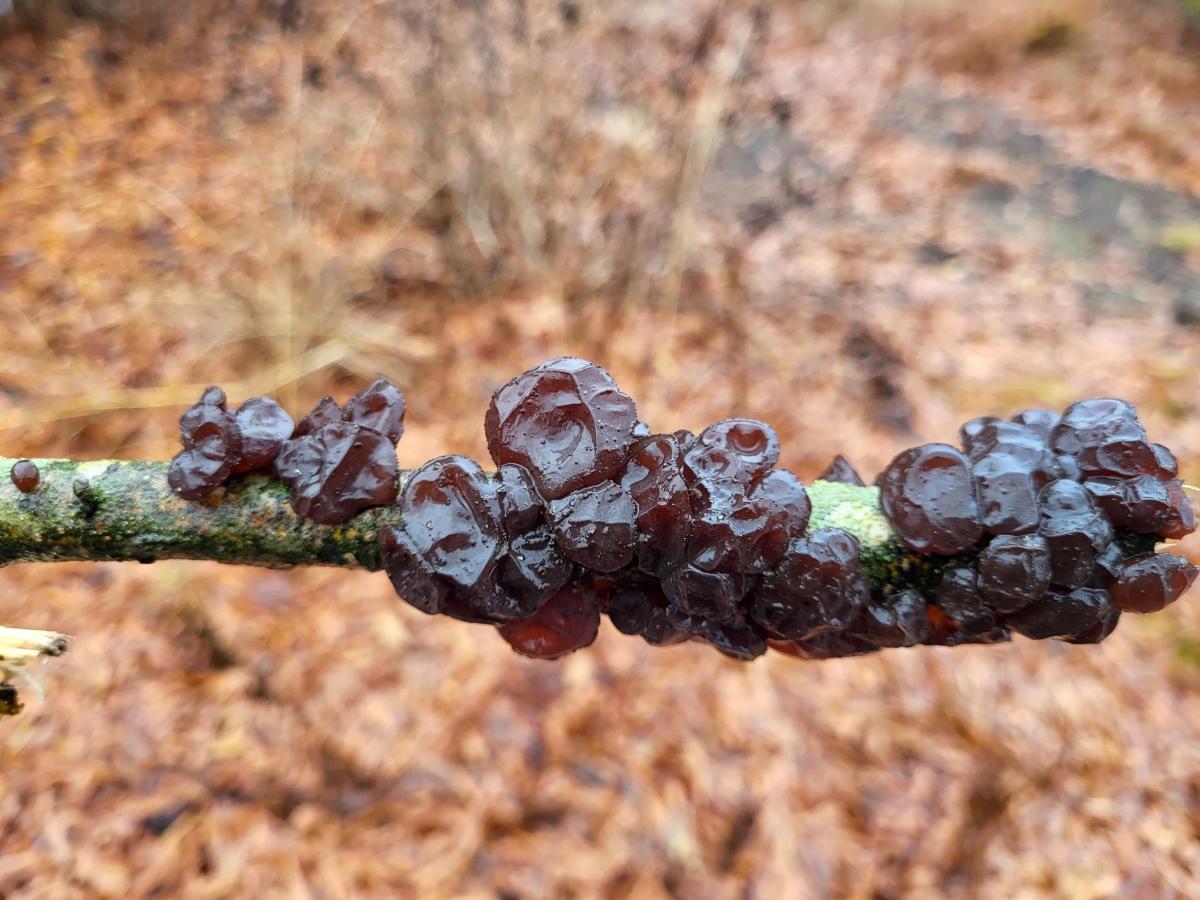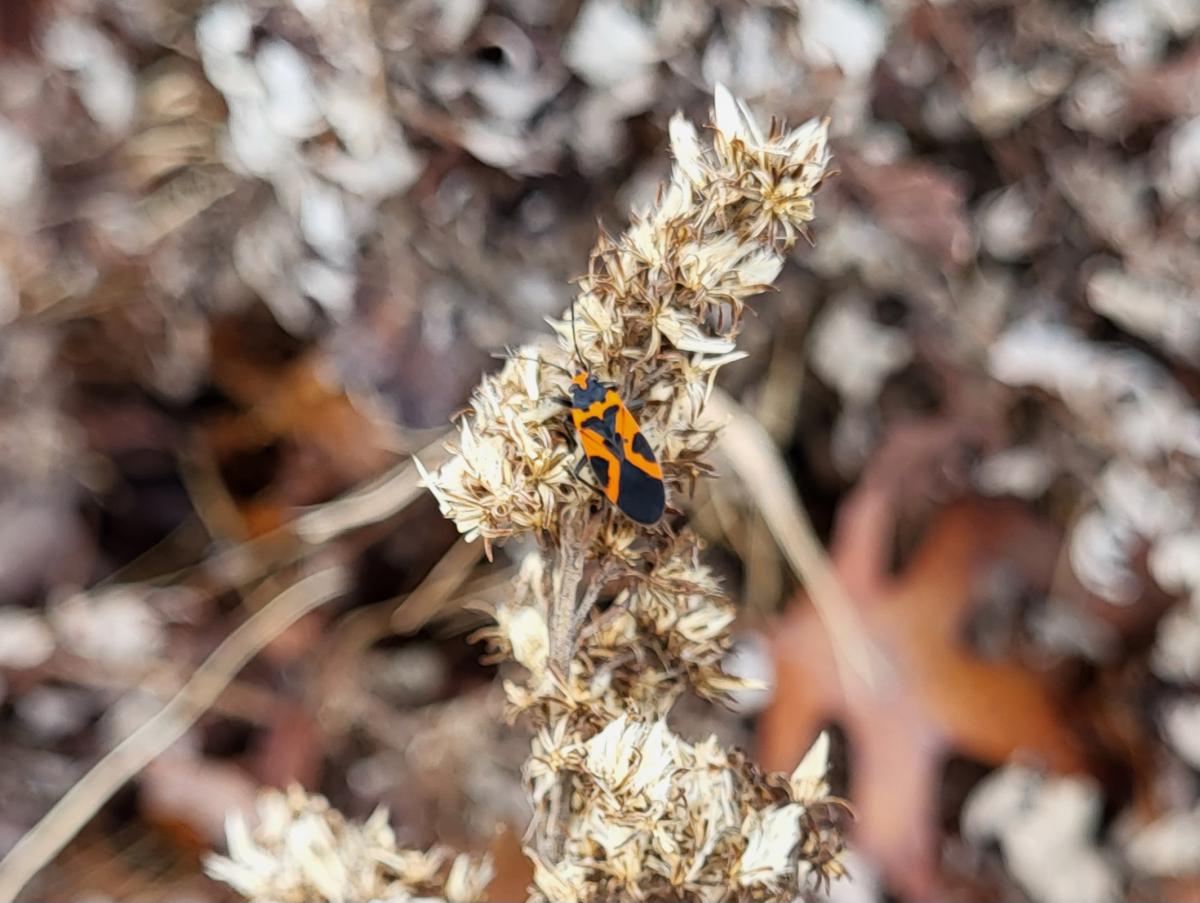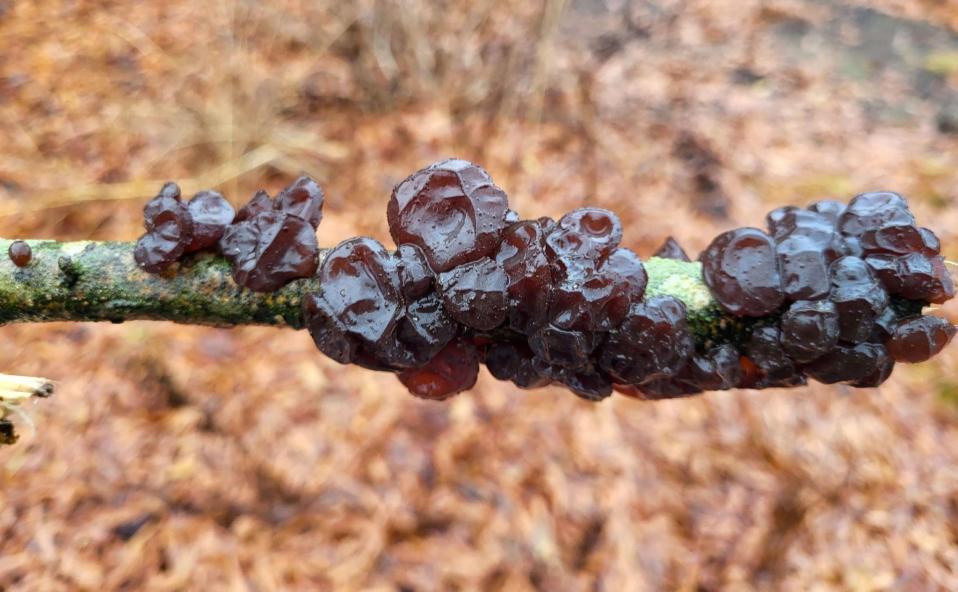Happy Mystery Monday! These late autumn rainy days have made some fungi really happy! What fungus did we find?
 Last week, we asked you about the false milkweed bug (Lygaeus turcicus). At first glance, this bug looks very similar to the large (Oncopeltus fasciatus) and small milkweed bugs (Lygaeus kalmii), as well as the box elder bug (Boisea trivittata). Fortunately, if you have time in the field or a good picture to work from, there are a few distinguishing features you can look for to identify the bug! Generally speaking, the milkweed bugs will be on milkweeds and other perennials such as asters. The false milkweed bug has what appears to be an overlapping “V” shape on its back. It is often found on oxeye sunflower and has been known to snack on the seeds. The large milkweed bug has a thick horizontal black band across its back and the small milkweed bug has a black heart shape on its back. The box elder bug is predominantly black, with some orange outlining and can be found on box elder, as well as maples and ash trees. It can take practice, but when you learn to look closer, there is so much more to see!
Last week, we asked you about the false milkweed bug (Lygaeus turcicus). At first glance, this bug looks very similar to the large (Oncopeltus fasciatus) and small milkweed bugs (Lygaeus kalmii), as well as the box elder bug (Boisea trivittata). Fortunately, if you have time in the field or a good picture to work from, there are a few distinguishing features you can look for to identify the bug! Generally speaking, the milkweed bugs will be on milkweeds and other perennials such as asters. The false milkweed bug has what appears to be an overlapping “V” shape on its back. It is often found on oxeye sunflower and has been known to snack on the seeds. The large milkweed bug has a thick horizontal black band across its back and the small milkweed bug has a black heart shape on its back. The box elder bug is predominantly black, with some orange outlining and can be found on box elder, as well as maples and ash trees. It can take practice, but when you learn to look closer, there is so much more to see!
#adkinsarboretum #mysterymonday #mysterybug #mysterfungus #falsemilkweedbug #bugsarecool #learntolookcloser #autumnatthearboretum
 Adkins Mystery Monday is sponsored by the Spy Newspapers and Adkins Arboretum. For more information go here.
Adkins Mystery Monday is sponsored by the Spy Newspapers and Adkins Arboretum. For more information go here.



Chuck Reeser says
Jelly mushrooms you can eat them